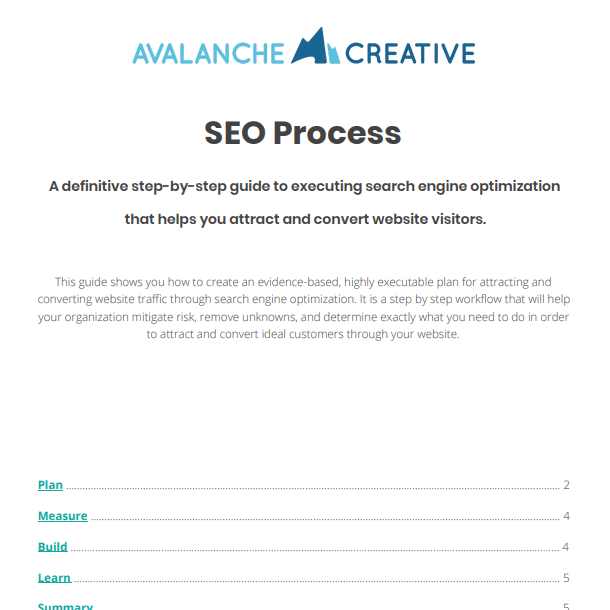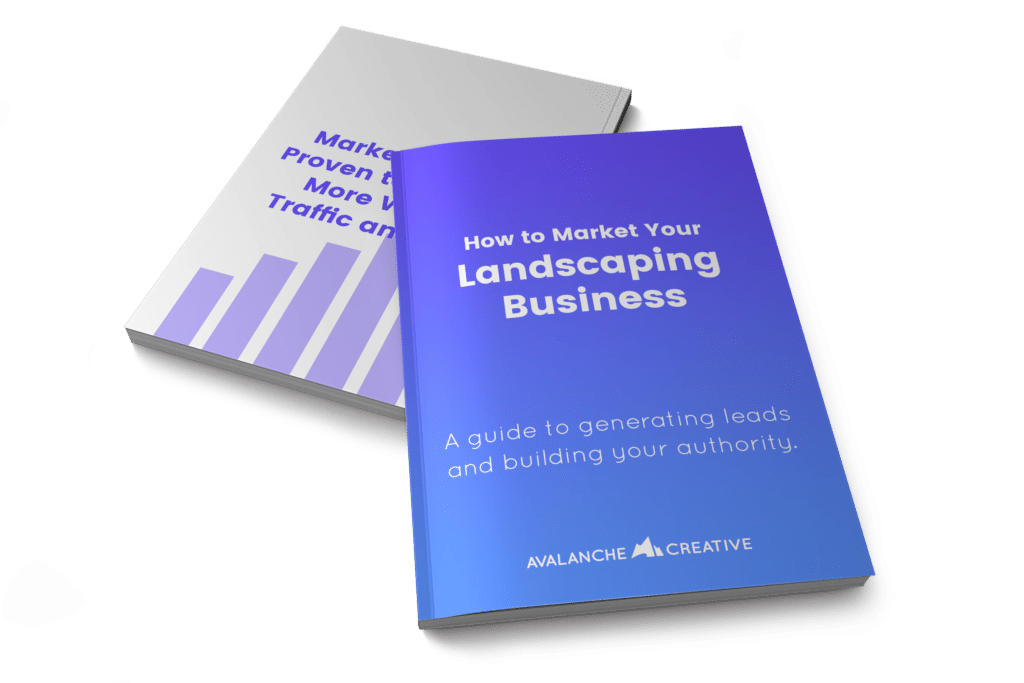Grow Visibility Like You Grow Lawns with Local SEO
Category: Digital Marketing, Search Engine Optimization | Tags: Local SEO, google business profile, landscapers
You know what’s wild? People will drive past your perfectly wrapped truck and still call a competitor they found on Google.
Visibility wins jobs. Local SEO puts your business in front of homeowners who are ready to book. When your name shows up first, with strong reviews and clear service areas, that’s not luck. That’s strategy.
Local SEO connects your landscaping business with nearby customers searching for help right now. It’s not about vanity rankings or chasing algorithms. It’s about owning your service area and turning search traffic into phone calls, quote requests, and booked jobs.
Let’s dig into how to make that happen.
In This Guide
1. Build a Google Business Profile That Converts
Your Google Business Profile (GBP) is your digital storefront. It’s how potential clients decide whether to call you or keep scrolling.
To win in your local market:
- Claim and verify your listing. If Google doesn’t trust it, no one else will.
- Use consistent business info. Your name, address, and phone number (NAP) should match your website exactly.
- List your real service areas. Add the cities and zip codes you actually work in, not the whole state or areas you won’t drive to.
- Upload authentic photos. Crews in action, finished projects, company vehicles—all of it builds trust.
- Post weekly. Share updates like “Now scheduling spring cleanups” or “Just wrapped up a patio install in Zeeland.”
- Collect and respond to reviews. Homeowners care about reviews more than rankings. Google does too.
Pro tip: Reply to every review with a location baked in—“Thanks, Jamie! Loved transforming your backyard in Hudsonville.” It sounds personal and adds valuable local relevance.
2. Create Pages That Target Each Service and City
Google ranks pages, not websites. That means your “Services” page shouldn’t be carrying the entire load.
Instead, build individual landing pages that combine service + city keywords.
At Avalanche, our favorite URL structure is to nest services under a service area parent page. Like so:
- /service-areas/grand-rapids/landscape-design
- /service-areas/holland/hardscaping
- /service-areas/byron-center/lawn-care/lawn-mowing
Each page should include:
- A clear headline (“Hardscaping in Grand Rapids, MI”)
- A few lines about the local landscape: soil types, weather, or city-specific styles
- A strong call to action (“Book your free estimate”)
- An embedded service area map or list of nearby towns
Resist the urge to copy and paste across pages. Google wants unique, valuable content. And your audience can tell when it’s generic. Write for humans, not search engines alone, and the ranking follows.
3. Target Service Areas, Not Just Your Location
If you travel to your customers, not the other way around, you’re what Google calls a Service Area Business (SAB).
Here’s how to show up like one:
- Hide your address on your GBP if you don’t have a public storefront.
- List every city you serve. Include suburbs and smaller towns where competition is lower.
- Embed a service map on your website to visually show coverage.
- Add a “Service Areas” page linking out to each city-specific page.
Example
URL: /service-areas/
Headline: “Proudly Serving Homeowners Across West Michigan”
Body: A quick intro + links to “Landscaping in Grand Rapids,” “Lawn Care in Holland,” etc.
This helps Google crawl and categorize your reach, while giving visitors instant confidence that you serve their area.
4. Align Your Content With Local Search Intent
Not every search means the same thing. Homeowners use Google differently depending on what they need.
For landscapers, search intent typically falls into three categories:
1. Transactional (Ready to hire)
Examples:
- “Lawn mowing near me”
- “Landscaper in Grand Rapids”
- “Hardscaping contractors in Zeeland”
→ These belong on your service and city pages.
2. Research (Looking for ideas)
Examples:
- “Backyard patio ideas Grand Rapids”
- “Best trees for Michigan soil”
→ Turn these into blog posts or project showcases.
3. Comparative (Weighing options)
Examples:
- “Best landscaping companies in Holland MI”
- “Top-rated lawn care near me”
→ Create “Why Choose Us” or “Compare Your Options” pages.
Pro tip: If you can answer local “People also ask” questions right on your page (“How much does lawn care cost in Grand Rapids?”), you can earn featured snippets, AKA prime real estate in Google results.
5. Earn Local Backlinks That Prove You’re Legit
Google looks for signs that your business is trusted locally. Backlinks and mentions are your receipts.
Here’s how to build them:
- Join local directories like your city’s Chamber of Commerce or home improvement associations.
- Sponsor youth sports teams, school fundraisers, or community events. Ask for a link on their website.
- Partner with realtors, nurseries, or property managers to trade mentions.
- Submit project recaps or tips to local news outlets or blogs.
- Encourage customers to share photos of your work in neighborhood Facebook groups.
These real-world ties tell Google you’re a legitimate part of the community, and that’s exactly what the algorithm rewards.
6. Tighten Up Your On-Page SEO
Once your strategy is in place, dial in the technical side so every page pulls its weight.
Checklist:
- A single H1 per page with a service + location keyword
- Clear headings that read like real questions or benefits (“Why Homeowners in Grand Rapids Choose Us”)
- Schema markup for LocalBusiness and Service types
- Consistent NAP info in your footer
- Internal links between related pages (from “Hardscaping” to “Retaining Walls”)
- Optimized images with descriptive filenames (“grand-rapids-landscaping-yard-before-after.jpg”)
Keep your site fast and mobile-friendly; most homeowners are searching while standing in their yard, not behind a computer.
Want to see this in action? In this video, our CEO, Lance Beaudry, takes a look at a landscaping company’s website and how it could be stronger:
7. Build Local Authority With Educational Content
Blog content is fuel for your local authority, not filler. Use it to answer the questions your customers actually ask:
- “When’s the best time to fertilize in Michigan?”
- “How much does landscaping cost in Grand Rapids?”
- “What’s the difference between hardscaping and landscaping?”
Sprinkle in project spotlights, seasonal maintenance guides, and before-and-after galleries. These not only attract search traffic but also showcase your craftsmanship and experience, which is truly the stuff that converts readers into leads. The more you teach, the more trust you earn.
8. Measure What Matters
SEO may seem like magic, but it’s actually just a measurable, repeatable strategy. Once your strategy’s live, keep tabs on what’s working.
Regularly track these three places:
- Google Business Profile Insights: phone calls, map views, and direction requests
- Google Search Console: the search terms and pages driving organic traffic
- Google Analytics: form submissions, calls, and quote requests
See which services or locations bring in the most leads. Double down on them. If “hardscaping Grand Rapids” outperforms “lawn care Holland,” you’ve got a clear growth signal.
Ready to Grow Your Landscaping Business Locally?
You already know how to make a yard thrive. We know how to make your business visible to the people who need you most.
With proven landscaping SEO services and our marketing resources for landscapers, Avalanche helps landscaping companies attract more leads, convert them into clients, and grow their local presence.
Let’s turn your website into your hardest-working salesperson; one that ranks, persuades, and grows right alongside you. Contact us today and let’s get started.
FAQs
How do landscapers rank higher on Google?
Landscapers rank higher by optimizing their Google Business Profile, earning local backlinks, creating pages for each service and city, and consistently posting high-quality, location-specific content. Google rewards real businesses with consistent signals of trust and relevance.
What’s the best SEO strategy for a landscaping business?
Start local. Focus on ranking in your service areas before chasing broader keywords. Create detailed service + city pages, collect reviews, and post local project photos. Once you dominate your market, expand your content strategy with educational blogs and seasonal guides.
Does SEO really work for landscapers?
Oh yeah, especially local SEO. Homeowners looking for landscaping help rarely scroll past the first page. A strong local strategy helps you show up where they’re searching, increasing both calls and quote requests.
How long does it take to see results from landscaper SEO?
You’ll typically see traction within a few months, but local SEO compounds over time. The longer your business maintains consistent listings, reviews, and content updates, the stronger your visibility becomes.
What should landscapers avoid in SEO?
Avoid duplicate city pages, keyword stuffing, or fake reviews. Those tactics might work short term but damage long-term trust and rankings. Stick with consistent, high-quality content that represents your business truthfully.
Share this article:
The Avalanche Email: Fun. Simple. Educational. No Selling.
Learn Result-focused SEO & Content
Join over 2,272+ others who get one email every Wednesday with simple instructions on how to get more website traffic and leads through SEO and content marketing. (Learn more about the email)
Keep Learning
How To Show Up in Gemini (And Win More Local Jobs)
Show up in Gemini when homeowners search for landscaping services. Build the right signals on Google and your website to win more qualified local jobs.
How to Run Google Ads for Landscapers: A Complete Guide
Learn how to set up Google Ads for landscapers, attract qualified leads, and win more local jobs with this step-by-step guide.
🏔️ Watering > Planting New Seeds
Your next marketing win may already be on your site. Learn how to optimize existing pages for better rankings, traffic, and results.
The Recipe vs. The Meal
Your customers buy the experience, not the product. Discover a simple way to shift your message from ingredients to the full meal.
🏔️ Hook, Line, and Sinker 🎣
Use this fishing framework to turn your posts into stories that capture attention, create tension, and inspire action from your audience.
🏔️ Avoid Everything That Doesn’t Move You Forward
Stop chasing shiny tools and refocus on what moves your marketing toward the end zone. Simple steps to cut noise and make steady progress.





